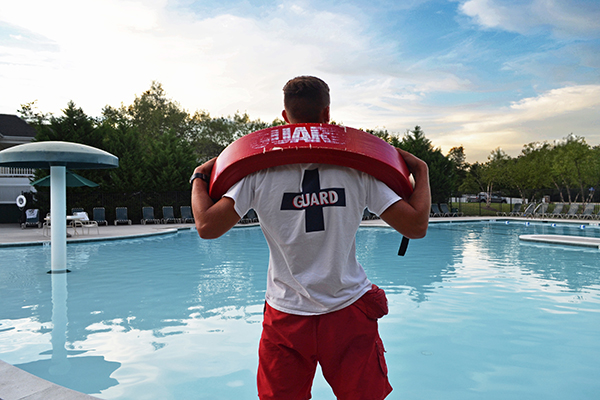What are the Responsibilities of a Lifeguard?
A lifeguard is responsible for the safety of swimmers in a pool or other body of water. Lifeguard certification is an important requirement to be able to perform the duty with the necessary knowledge and skill. The responsibilities of a lifeguard include:
- Checking that all swimming pools have proper fencing and adequate signage.
- Ensuring that there are no obvious dangers, such as deep water, open gaps, or other hazards.
- Keeping track of the pool area to ensure it is safe for swimmers.
- Removing or reporting unsafe conditions.
- Reporting violations of pool rules to pool management or local law enforcement.
How Does A Lifeguard Protect Swimmers?
It is important for a lifeguard to be able to assess the situation and make quick decisions about whether to call 911 or not. If a swimmer is in danger, a lifeguard should immediately call 911. A lifeguard should always call 911 if a swimmer is drowning.
If a lifeguard sees a swimmer who has been injured, the lifeguard should try to get the swimmer out of the water. If a lifeguard is alone, he or she should make sure that the nearest adult can reach help. The American Lifeguard Association teaches all these things are taught when you are enrolled with us for a lifeguard certification course.
What Does A Lifeguard Need To Know?
- How to use equipment
- How to use a rescue board
- How to use a rescue tube
- How to use a rescue ring
- How to use a rescue net
- How to use a flotation device
- How to use an AED
- How to perform CPR
The first step in lifesaving is getting the victim out of the water.
- How do you rescue someone?
- The person in distress is the victim. The rescuer is the lifeguard. A lifeguard should assess the situation. He or she should ask questions to determine if the victim needs immediate help.
- Is the victim bleeding from any open wounds?
- Is the victim unconscious? Is the victim breathing?
- If the victim is breathing and bleeding, the lifeguard should begin CPR immediately. How long does it take to get a victim out of the water?
The victim must be moved out of the water as quickly as possible. It is best to place the victim on the rescue board and then pull him or her out of the water. It takes time to turn the victim over onto his or her back so that the victim can be pulled out of the water. There is no set time for this maneuver.
The victim’s vital signs should be checked before leaving the water.
- Does the victim have a pulse?
- Does he or she breathe?
- Does the victim have a heartbeat?
- Is there blood in the victim’s mouth?
- Has the victim lost consciousness?
- Does the victim have water in the lungs?
If so, he or she is drowning. The victim should be checked by a doctor as soon as possible.
- Does the victim have any open wounds?
- How serious are they?
- Is the victim bleeding from the nose, ears, or eyes?
- Is the victim bleeding from a cut on the finger or toe?
If so, you can do nothing more than try to help him or she get to a hospital for immediate medical attention.

Drowning Prevention
It is important to know that the following measures can prevent drowning:
- Never allow children to play near rivers, lakes, or swimming pools.
- Always supervise children when they are playing in the water.
- Never let children use water toys that are not designed for small children.
- Always supervise children while they swim.
- Teach children how to swim.
Lifeguard certification Course at ALA
When you take a lifeguard certification course then all of these things are taught for you to become equipped with training and skills to save prevent drowning and help the victims. We at the American Lifeguard Association (ALA) are determined to make lifeguards who are fully skilled for all kinds of water hazards and emergencies in aquatic conditions.
If you want to make lifeguarding your profession, then contact ALA for a lifeguard certification course and start developing your professional skills in water any time of the year.

